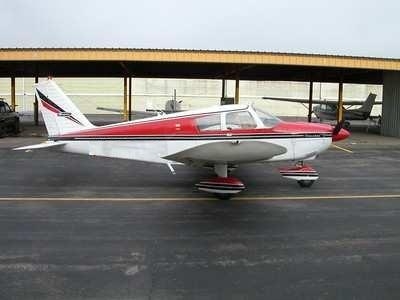Two Fatally Injured When Plane Went Down On Approach To KLNA In South Florida
The NTSB has released its preliminary report from an accident which occurred October 13 in which a Piper PA-28-180 went down in a trailer park while on approach to Palm Beach County Park-Lantana Airport (KLNA) in Lantana, Florida. The pilot of the aircraft and one person on the ground were fatally injured in the accident. The mobile home that was impacted by the airplane was severely damaged by the impact and fire, and the person fatally injured on the ground was a 21-year-old woman who was sleeping in the mobile home when the plane went down.

According to the report, the Piper Cherokee (N57312) was consumed by a postimpact fire and destroyed. Visual meteorological conditions prevailed and no flight plan was filed for the flight that departed Kissimmee Gateway Airport, (KISM), Kissimmee, Florida, with an intended destination of KLNA. The airplane was owned by Flyers Inc. and operated by a private individual as a personal flight in accordance with the provisions of Title 14 Code of Federal Regulations Part 91.
Preliminary information from the FAA revealed that the flight originated at KLNA earlier during the day of the accident, and flew to KISM, where fueling records indicated that the airplane was fueled with 20 gallons of 100-low-lead aviation gasoline (top off). The flight departed KISM approximately 7 hours later for an intended landing back at KLNA. The pilot received flight following from air traffic control to KLNA and radioed on the common traffic advisory frequency that he was 3 miles east of the airport and going to enter a mid-field left downwind leg for runway 15. The pilot then radioed that he was turning a left base leg for runway 15 and no other communications were received from the pilot. A radar plot showed the airplane flying through the runway center line and then making an "S"-turn before radar coverage was lost.
A witness observed the airplane flying overhead and watched as it made the "S"-turn, followed by a steep right 180-degree turn and descend into a mobile home park. He then saw smoke and fire where the airplane went down.
The wreckage was examined at the accident site and again at a recovery facility. No readable cockpit instruments were recovered. Aileron control continuity was established from the control chain in the cockpit, via aileron cables that were separated and exhibited broomstraw ends, to their respective aileron bellcranks, which had also separated from the wings. Rudder control continuity was confirmed from the rudder horn to the rudder bar. Stabilator control continuity was confirmed from the "T" bar to the balance weight. The stabilator trim system was not recovered and presumed destroyed by post impact fire.

The two-blade propeller remained attached to the engine. One blade was bent aft, partially melted and contained leading edge nicks, while the outboard half of the other propeller blade was consumed by fire. The top spark plugs were removed from the engine and the propeller was rotated by hand. Camshaft and crankshaft continuity were confirmed to the rear accessory section and valve train continuity was confirmed to the No. 1 and No. 3 cylinders. Due to impact and thermal damage, valve train continuity to the No. 2 and No. 4 cylinders were confirmed by visual inspection.
According to FAA records, the pilot held a private pilot certificate with a rating for airplane single-engine land, which was issued on May 4, 2012. He also held an FAA third-class medical certificate, issued September 23, 2015. At the time of the medical examination the pilot reported 250 total hours of flight experience.
The four-seat, low-wing, fixed tricycle gear airplane, serial number 28-7405042, was manufactured in 1973. It was powered by a Lycoming O-360, 180-horsepower engine, equipped with a two-blade fixed-pitch Sensenich propeller. Review of maintenance records revealed that the airplane's most recent annual inspection was completed on May 25, 2015. At that time, the airframe had accumulated about 6,199 total hours of operation and the engine had accumulated 1,320 hours since major overhaul.
The 1753 recorded weather observation at West Palm Beach International Airport (PBI), West Palm Beach, Florida, located approximately 4.5 miles north of the accident location, included wind from 140 degrees, at 13 knots, visibility 10 miles, few clouds at 5000 feet, scattered clouds at 25,000 feet, temperature 28 degrees C, dew point 21 degrees C; barometric altimeter 29.91 inches of mercury.
(Image from file. Not accident airplane)
 ANN's Daily Aero-Linx (05.02.24)
ANN's Daily Aero-Linx (05.02.24) ANN's Daily Aero-Term (05.02.24): Touchdown Zone Lighting
ANN's Daily Aero-Term (05.02.24): Touchdown Zone Lighting Aero-News: Quote of the Day (05.02.24)
Aero-News: Quote of the Day (05.02.24) ANN FAQ: Contributing To Aero-TV
ANN FAQ: Contributing To Aero-TV NTSB Final Report: Cirrus Design Corp SR20
NTSB Final Report: Cirrus Design Corp SR20




